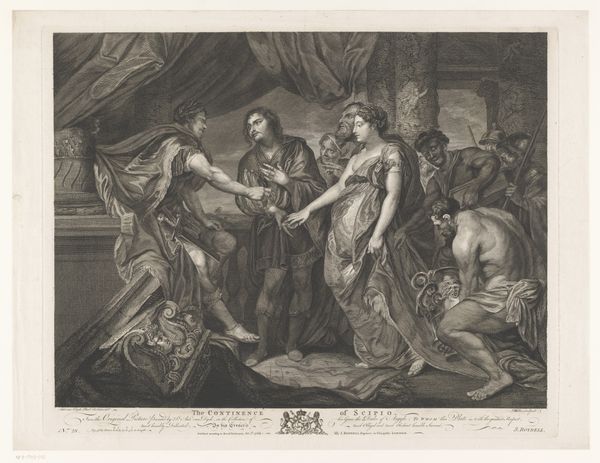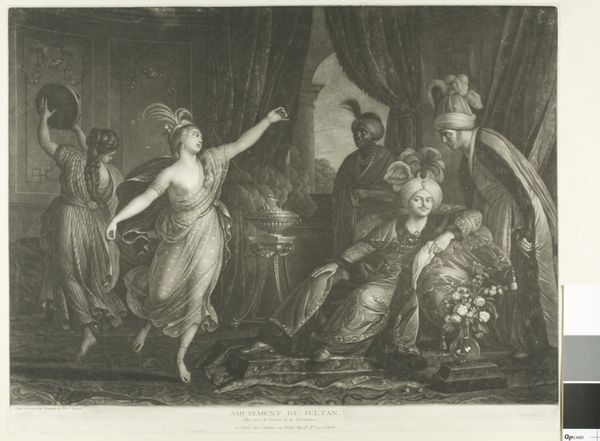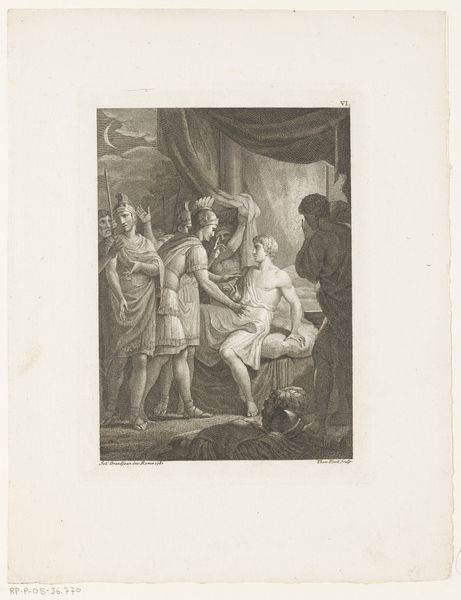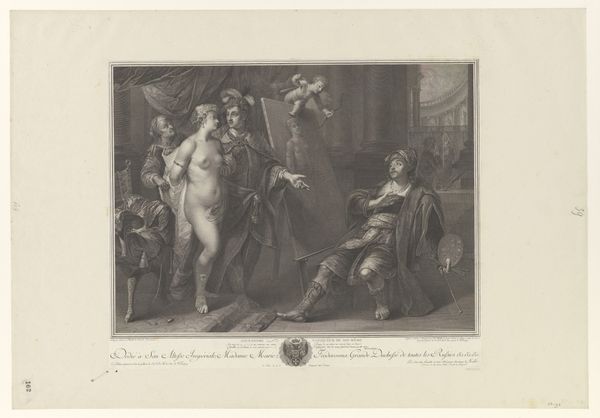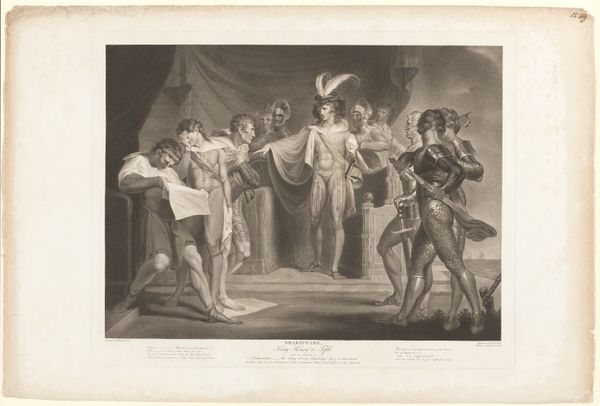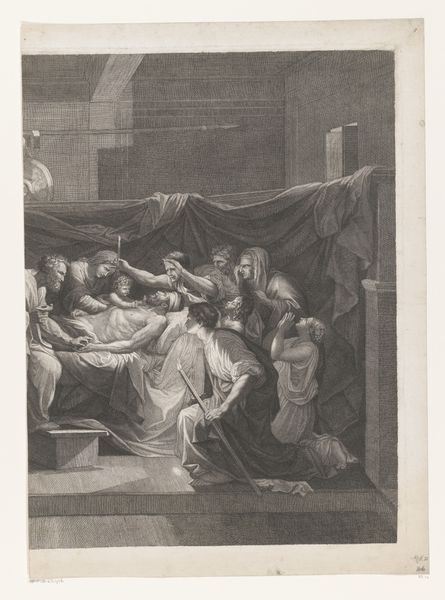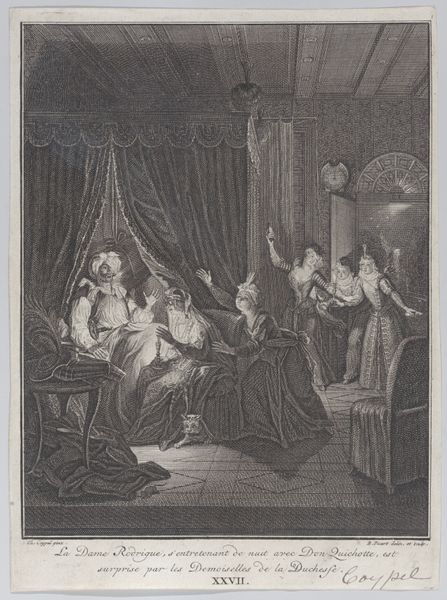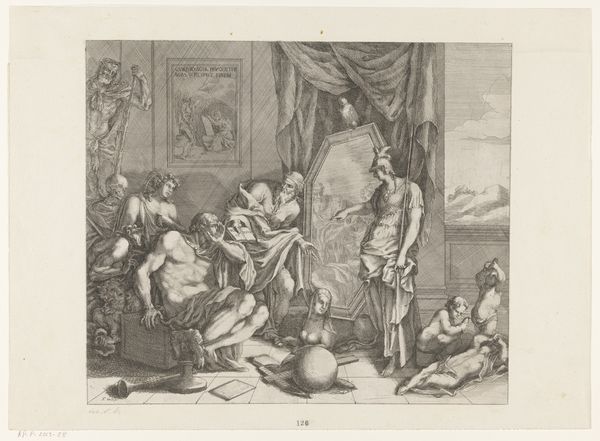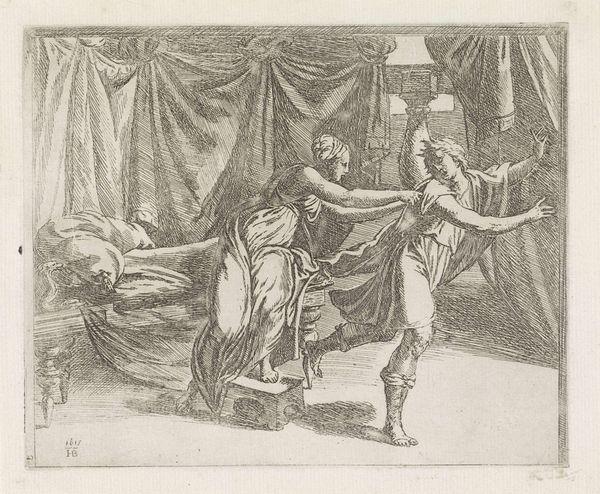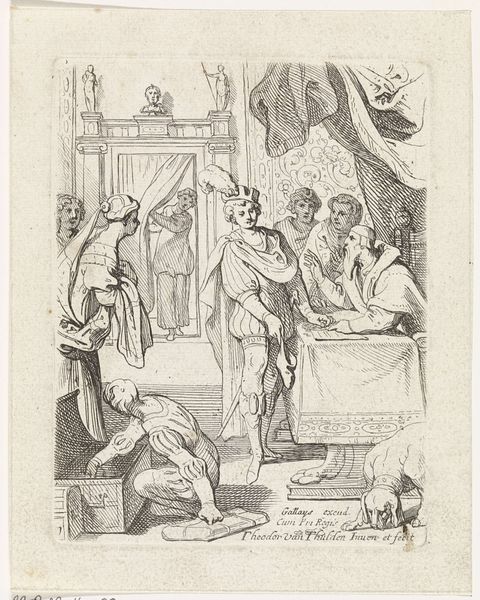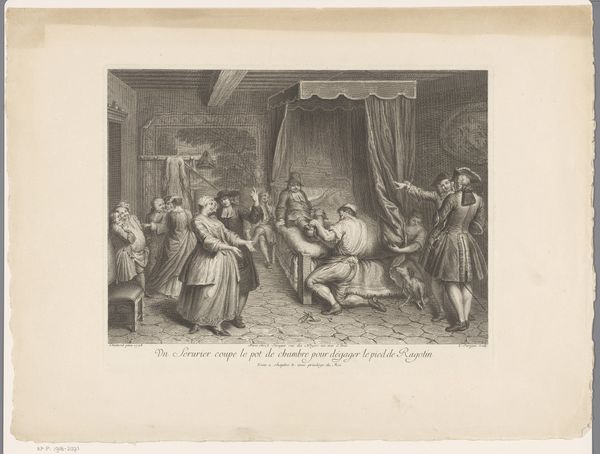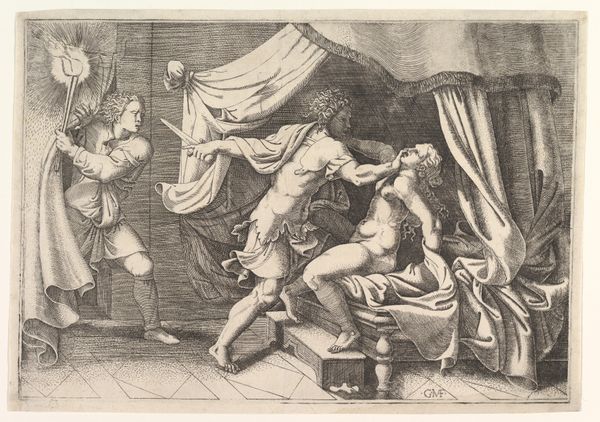
engraving
#
allegory
#
baroque
#
figuration
#
history-painting
#
nude
#
engraving
Dimensions: height 186 mm, width 236 mm
Copyright: Rijks Museum: Open Domain
Curator: Welcome. Before us is Philip van Gunst's "Vulcanus betrapt Venus en Mars," an engraving residing here at the Rijksmuseum, made sometime between 1685 and 1732. Editor: It’s a wonderfully dramatic scene. The tightly woven lines create an almost stifling atmosphere. It makes me think about class tensions inherent in storytelling of this nature. Curator: Class is precisely what I see too; let’s dig deeper into what van Gunst’s print communicates. Engravings democratized art. Before, wealthy patrons had exclusive access to painted depictions of mythology and courtly intrigue, which is radically reframed in such engravings. What’s depicted becomes material for the common viewer. Editor: And that choice of imagery - love, betrayal, and divine justice. The scene unfolds like theatre! The figures are so posed. Vulcan, catching Venus and Mars. The artist wields considerable skill to bring an ethereal touch to common life by elevating subjects such as infidelity through recognizable tropes that existed as forms of public knowledge. Curator: Think about who had access to these images. For those experiencing difficult financial times in the 17th and 18th centuries, owning even a reproduction of such drama could provide a form of escapism from the material constraints they faced daily. The engraving then has tangible value as entertainment and solace in ways the initial artworks in Baroque courts rarely offered. Editor: Absolutely! The texture rendered through the etching technique becomes its own expressive medium, right? You notice the very careful depiction of the net flung over Venus and Mars, contrasted with the flowing draperies. The material handling mirrors the power dynamic displayed. Curator: I find it all so fascinating, the journey that these allegorical stories took from the elite to popular culture through the work of engravers. These replications become almost like a new kind of material good, meant for broad consumption. Editor: A democratization of beauty and drama, replicated and distributed. Very interesting how its meaning shifted!
Comments
No comments
Be the first to comment and join the conversation on the ultimate creative platform.
